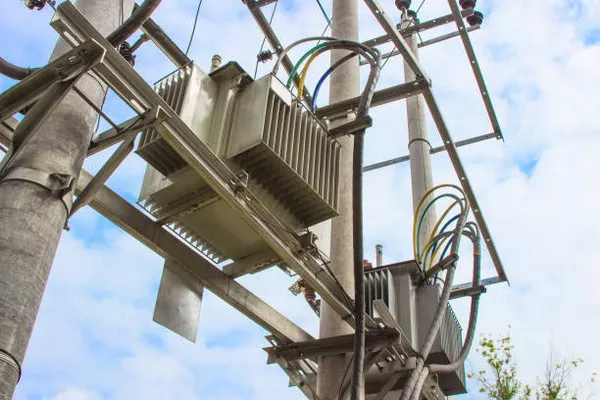Transformers are fundamental devices in electrical engineering, playing a pivotal role in transmitting and distributing electrical power efficiently across vast distances. Among their many functions, one of the most crucial is their ability to alter voltage levels, either stepping it up or stepping it down, depending on the application. This article delves into the intricate workings of transformers, elucidating how they increase voltage and the underlying principles governing their operation.
Introduction to Transformers:
Transformers are static devices that transfer electrical energy from one circuit to another through mutual electromagnetic induction. They comprise two coils of wire, known as the primary and secondary windings, usually wound around a common core made of ferromagnetic material. The primary winding is connected to the input voltage source, while the secondary winding is linked to the output circuit.
Principle of Electromagnetic Induction:
At the heart of transformer operation lies the principle of electromagnetic induction, elucidated by Michael Faraday in the 19th century. This principle states that a changing magnetic field induces an electromotive force (EMF) in a nearby conductor. In a transformer, alternating current (AC) flowing through the primary winding generates a fluctuating magnetic field in the core, which, in turn, induces a voltage in the secondary winding.
Step-Up Transformers:
Step-up transformers are designed to increase voltage levels from the input (primary) to the output (secondary) side. This process involves more turns of wire in the secondary winding than in the primary winding. According to Faraday’s law of electromagnetic induction, the induced voltage in the secondary winding is proportional to the rate of change of magnetic flux linking the winding. Therefore, increasing the number of turns in the secondary winding enhances the induced voltage.
Core Saturation and Efficiency:
In practical transformers, the core material’s magnetic properties play a crucial role in determining efficiency and performance. Ferromagnetic materials such as iron or steel are commonly used due to their high magnetic permeability. However, these materials exhibit a phenomenon known as core saturation, wherein further increases in magnetic flux do not produce proportional increases in induced voltage. To mitigate this effect and enhance efficiency, transformer cores are often constructed with laminated sheets to reduce eddy currents and eddy current losses.
Regulation and Load Variations:
Transformers must maintain relatively constant output voltage despite fluctuations in load current. Regulation, defined as the percentage change in output voltage from no-load to full-load conditions, is a critical parameter in transformer design. Regulation is influenced by factors such as winding resistance, leakage reactance, and core losses. To minimize regulation and ensure stable voltage output, transformer designs incorporate techniques such as voltage regulation taps, feedback control circuits, and sophisticated winding configurations.
Applications of Step-Up Transformers:
Step-up transformers find widespread use in various applications, including power transmission, electrical distribution, and voltage regulation. In power transmission networks, high-voltage transmission lines minimize power losses over long distances, necessitating the use of step-up transformers to increase voltage levels at the generating station before transmission. Additionally, step-up transformers are employed in voltage regulation systems to compensate for voltage drops in distribution networks and maintain consistent voltage levels at consumer endpoints.
See Also How Transformers Increase Voltage? All You Need to Know
Conclusion:
Transformers serve as indispensable components in modern electrical systems, facilitating the efficient transmission and distribution of electrical power. Through the principles of electromagnetic induction and voltage transformation, transformers can step up or step down voltage levels as required for diverse applications. Understanding the underlying mechanisms of transformer operation, including core saturation, regulation, and efficiency considerations, is crucial for designing reliable and effective electrical infrastructure. As technology advances, transformers continue to evolve, contributing to the evolution of smarter, more resilient power grids that meet the demands of an increasingly electrified world.

